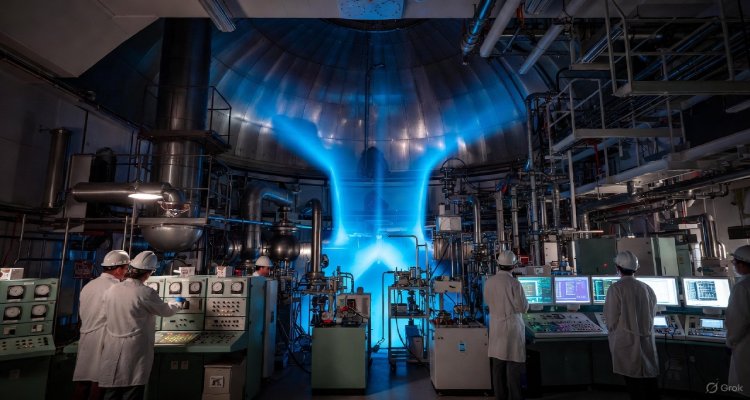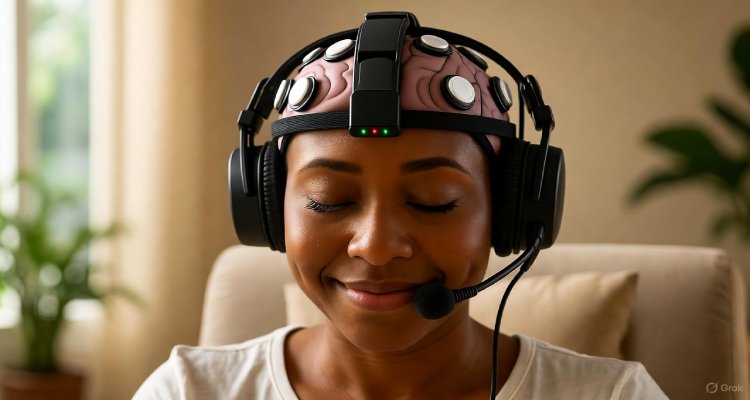When Meditation Meets Machine Learning
Exploring how AI and mindfulness intersect—discover how machine learning is transforming meditation practices, enhancing mental wellness, and redefining human self-awareness.
1. Introduction: A New Kind of Mindfulness
In a quiet room, a person sits cross-legged, eyes closed, breathing steadily. But unlike a traditional meditation class, a machine watches—tracking heart rate, analyzing brainwaves, and adjusting ambient sounds in real time. This is not the future; it’s the present intersection where ancient mindfulness meets artificial intelligence. As meditation apps evolve into intelligent systems powered by machine learning, they promise to make inner peace not just a practice, but a personalized science.
2. Context & Background: From Monasteries to Algorithms
For thousands of years, meditation remained rooted in spiritual traditions—from Buddhist monasteries to yoga studios in the West. Its essence was simplicity: breath, focus, awareness. But in the digital era, meditation has been reimagined through technology.
The early 2010s saw the rise of popular mindfulness apps like Headspace, Calm, and Insight Timer, introducing meditation to millions. As their user bases expanded, so did their data—millions of sessions, sleep patterns, stress markers, and feedback loops.
That massive dataset set the stage for machine learning (ML)—algorithms capable of learning from human behavior—to step in. What began as guided audio sessions has now become an adaptive ecosystem that tunes meditative experiences to individual needs.
3. Main Developments: Algorithms That Understand Stillness
The latest generation of mindfulness technology goes beyond static guidance. Tools like Muse, InnerSense AI, and MindTrack are merging neuroscience with machine learning. These platforms use biometric sensors, EEG headbands, and emotion-recognition software to monitor users’ real-time responses during meditation.
When a meditator’s attention drifts, algorithms detect it through brainwave fluctuations and subtly adjust background audio or voice prompts. Over time, the ML models learn from patterns—how often a user loses focus, which sounds enhance calmness, or how specific breathing patterns affect heart rate variability.
Essentially, these systems are training the human mind while learning from it. As the technology refines its understanding, it begins to tailor sessions—recommending breathing techniques, timing meditations around stress peaks, or even predicting when a user might skip practice.
4. Expert Insight: Mind Meets Machine
Dr. Ananya Rao, a neuroscientist at the University of California, explains:
“Machine learning gives us the ability to see meditation through data. It allows personalized mental training—something that once took years of trial and error—to happen more efficiently and with measurable outcomes.”
Meanwhile, meditation teachers have mixed feelings. Some, like mindfulness coach Daniel Goleman, welcome the shift:
“AI isn’t replacing awareness; it’s amplifying it. For beginners, these tools remove the barriers of technique and discipline.”
Others warn of over-reliance. Buddhist scholar Tenzin Dorjee notes:
“True mindfulness is not about optimization. When technology steps in to ‘perfect’ meditation, we risk losing its spiritual depth.”
Despite the philosophical debate, one thing is clear: AI is making meditation more accessible, data-driven, and customizable than ever.
5. Impact & Implications: The Science of Self-Awareness
The implications extend beyond wellness apps. Hospitals are exploring AI-driven meditation for pain management, while corporations use adaptive mindfulness systems to reduce employee burnout. Machine learning models are also being trained to detect early signs of anxiety and depression, recommending specific meditative routines as preventive care.
This fusion of inner awareness and artificial intelligence is also reshaping research. Scientists can now quantify what used to be intangible—attention, calmness, focus—by measuring neurological and physiological markers. The result is a new frontier in mental health technology, where meditation becomes both art and analytics.
However, ethical questions persist: Who owns the data from one’s mind? Can emotional states be safely stored, interpreted, or monetized? As meditation merges with machine learning, privacy of consciousness becomes the next frontier of digital ethics.
6. Conclusion: Toward Conscious Algorithms
“When Meditation Meets Machine Learning” is not merely a technological milestone—it’s a philosophical one. As algorithms learn to read the rhythms of the mind, humanity faces a profound question: can machines teach us to be more human?
The future of mindfulness may lie in collaboration, not replacement—where data informs awareness, and awareness guides data. In that balance, perhaps, lies the next step in human evolution: conscious technology that helps us better understand ourselves.
Disclaimer: This article is for informational purposes only and does not substitute professional medical or psychological advice.











